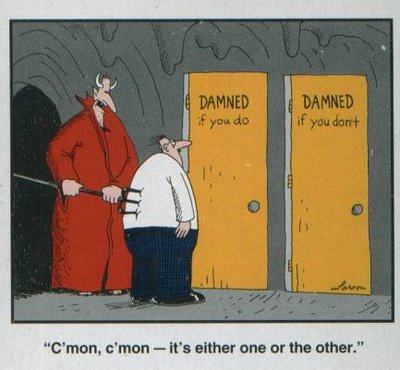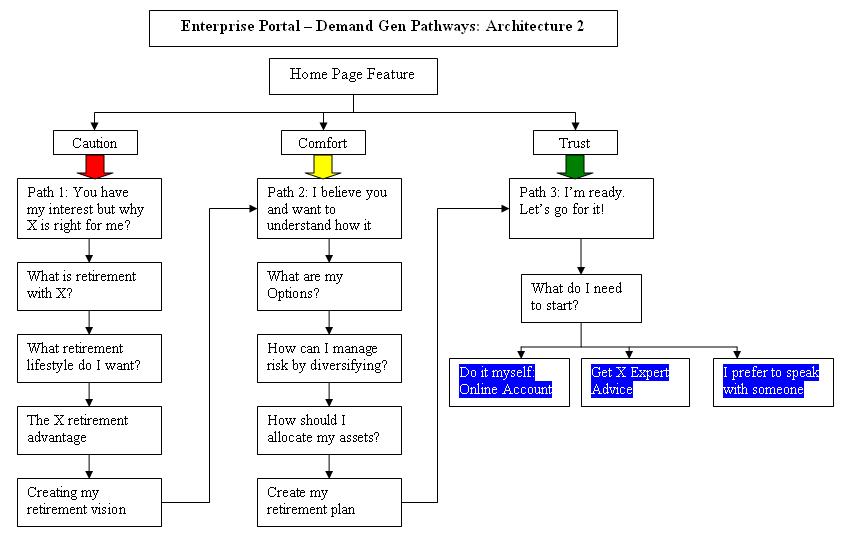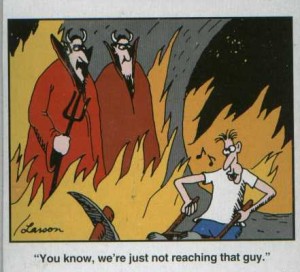It seems every so often a major debate arises because someone uses some math to redefine an accepted belief. Not a bad thing to happen as long as it is to improve mankind and not just to make a name for yourself. In fact, challenging current beliefs should be a regular occurrence.
This time it is about influence and I must say I’m concerned.
The Grudge Match
In the blue trunks we have the challenger, Duncan Watts, proclaiming the super influencer dead and raising the common man up on the pedestal as the new super being – power to the people! “Nobodies are the new somebodies” his sycophants scream from their blogs and Twitter accounts. Witness this interesting transcript where @GuyKawasaki (a super influencer under Gladwell’s model) echoes Duncan’s musings to the mesmerized crowd. (Warning! The transcript is long and chaotic, but worth the read just to see comments from everyone)
Quick question, if @GuyKawasaki was a nobody, would anyone have come to #techchat or RTed his comments? Irony? Maybe.
And in the red trunks we have the current champion, Malcom Gladwell, the godfather of the super influencer via The Tipping Point and champion to the elitist perspective of the power of the few. In his corner are the thousands upon thousands of marketers and companies who based their marketing strategies on reaching specific individuals to spread the good word.
Now the problem here is our champ is fighting with one hand behind his back because of his own views on using Social Media, opting instead for more traditional means such as speaking, his books and PR. With Malcolm’s absence from Twitter – does the champ stand a chance while every minute his idea empire is being besieged by Duncan’s minions?
If you believe, like I do, that ideas struggle for existence; rising and falling as they gain strength or weaken to competing ideas then this could be an interesting fight indeed. Natural Selection at work.
But before we get into the color commentary of our title fight, let’s first understand what the fight is about.
Somebodies, Nobodies and the Nature of Influence
 So is there room for a third idea here on influence? One that lands squarely in the great gray area in between these two polar opposites. After all, how can a complex human condition such as influence be explained in such a black and white perspective? How can math or even Chaos and Complexity Theory, for all its power, truly understand a highly evolved and mostly subconscious powerful emotional layer such as how we influence each other?
So is there room for a third idea here on influence? One that lands squarely in the great gray area in between these two polar opposites. After all, how can a complex human condition such as influence be explained in such a black and white perspective? How can math or even Chaos and Complexity Theory, for all its power, truly understand a highly evolved and mostly subconscious powerful emotional layer such as how we influence each other?
Let’s take a quick look at the Nature of Influence
- It is about cause and affect in endless overlapping cycles; both chaotic and predictable.
- Its complex and nebulous
- Everybody and everything has it (what?? things have influence?)
- Influence works on multiple levels both seen and unseen; conscious and subconscious; logical and emotional
- There are many forms of influence
This last point is what I would really like to explore because it might help identify a middle ground between these two intellectual leviathans.
Forms of Influence
Believing we affect each other in a single or limited way is myopic and an injustice to how human beings relate to each other and how we relate to our environments. Let me take a swing at identifying some of the major types of influence I could think of to help explain the concept.
- Popularity: Probably the most commonly identified form in society but popularity is also situational.
- Example: Celebrities are a fine example of popular influence
- Presence/Position: Presence and position relate directly to authority and how we each perceive authority.
- Example: Watch how people change when a police officer is in a room or drives by or when Barack Obama takes the stage.
- Reputation: Influence of reputation relates directly to the emotions of trust (loyalty), fear, love and hate – “emotions of attraction” in other words.
- Example: Brand and customer loyalty rises and falls in each of us according to the integrity of the brand (overall experience, service-product quality, price vs. value, what others say about it, etc..)
- Ideas: Simple powerful concepts and ideas are influential. The easier it is to relay the idea and the more people it applies to, the greater the influence.
- Example: Barack Obama’s “Yes we can” idea that united tens of millions of people in a time of great uncertainty. Watts and Gladwell come to mind to; the reason I’m writing this.
- Emotional: One of two forms of influence that is a bi-product of all other forms of influence affecting how we feel about a person, place or thing. It can be both conscious and subconscious and depending on the strength of the source, can have a profound and lasting impact on us.
- Examples range from the emotional tug a “child starving in Africa” commercial gives us to the anger at being cut off on the highway or the happiness of seeing your loved ones.
- Logical: The second form of influence that is a bi-product of all other forms of influence affecting how we rationalize our world and our experiences within it.
- Example: Reading a product whitepaper, an article, or a book such as the Tipping Point.
- Situation: Situational influence is the wild card in my mind and is the determining factor for how much all other forms of influence affect us. I’ll give two examples to illustrate.
- Example 1: Situation is driving your car on the highway and a police cruiser pulls up behind you. That is the situation.
- If you are speeding, then presence (police authority), emotional (fear-anxiety) and logical (slow down) influence forms come into play and immediately affect behavior
- Example 2: Situation is a strategy meeting with a well known marketing consultant.
- As the discussion progresses – reputation, presence, idea, emotional and logical influences are at play at the same time; each of you and your colleagues are being affected differently. Senior marketing people may not be affected by reputation or presence nearly as much as juniors.
- Now consider how each person in the room is influencing the other; a constant shifting sea of influence.
- Example 1: Situation is driving your car on the highway and a police cruiser pulls up behind you. That is the situation.
Layers of Influence
The metaphor I use when I try to explain how layers of influence work will hopefully help you visualize the concept better than words.
The metaphor is drawn from an experience near and dear to me and my boys; that of riding the bumper cars at the amusement park. If I am in my car, I could be bumped by one car or completely surrounded and jostled endlessly. The better drivers are able to influence me more while the poor schmoe stuck against the wall has little affect on me but I can take a good run at him, thus influencing him to a greater degree.
Layers of influence and people work in the same way. Constantly bumping into us, overlapping, morphing to continually affect our perceptions, behaviors and beliefs personally and in business; both positively and negatively.
Influence Distribution
This is really the heart of the debate between the champ (Gladwell) and the contender (Watts). How is influence distributed?
So here is my take…
Just like an opinion, everyone has influence. But just like opinions there is a high degree of variance in quality and quantity for each person. I prefer to think of influence as a sliding scale and highly situational.
A person can be a super influencer at one time (a firefighter at the scene of a fire) and have little influence the rest of the time. Our level of influence rises and falls; sometimes gaining strength in a certain area (such as marketing) and sometimes losing strength as a reputation deteriorates.
So is Duncan Watts a social media Robin Hood? Stealing influence from the super rich and giving it to the poor and influentially bankrupt? Is Malcom Gladwell Prince John then? Hoarding influence for the the social royalty alone? That would be amusing.
I prefer to look at how influence works more like a caste system. We have a big mass of low caste which has little influence beyond their own inner circle. We have a middle caste which has influence below and above it in varying degrees and an upper caste which has tremendous influence (both direct and indirect) over society, economics, politics, and business.
This differs from Gladwell’s Oligarchical view and Watt’s Marxist view. Its foolish to discount the power of super influencer (even more foolish to question their existence) and at the same time you cannot under estimate the powers of the mob or a solitary voice that can create a mob.
The roman emperors knew this, “He that controls the mob, controls Rome”.
Positive and Negative Influence
Positive and negative influence has always existed and again is more like a slide rule than a black and white concept. We all create it and we are all affected by it. We need to be able to understand that as a business, you can negatively influence your customers; by delivering a bad experience, making interactions overly complex or not delivering on what you promise.
Adversely, you can positively influence customers by delivering a good experience, meeting expectations, and simplifying interactions. So two questions come to mind…
- Where are you on the positive-negative scale of influencing your customers?
- Do you know how people you influence are influencing others who might be considering your product or service?
Amplifying Influence
Many methods and tools exist and continue to evolve to amplify a person or brands influence.
For brands (personal or corporate) we have all of the traditional methods (PR, advertising, publishing, media and internet) at our disposal as well as the new social and mobile methods to amplify our message to influence the masses or certain segments of the masses.
For the common person (the nobodies as Duncan affectionately calls us) the recent rise of powerful Social Media environments such as Twitter and FaceBook have helped improve how we can influence and how our influence can spread. The real influence amplifier for nobodies is You Tube for taking ordinary (and truly bizarre) people transforming them into instant celebrities.
But let’s not kid ourselves here, the vast majority of what nobodies put out is absolute garbage to anyone else but their closest network. This is why nobodies don’t get noticed; their content/conversations/ideas do not have any kind of mass appeal.
Lastly, our network, whether its personal or business, is probably the greatest amplifier we have for using their own methods from word-of-mouth to social media to amplify the people and ideas they believe in.
Power to the Bodies!
Don’t let thousands of years of organized religion fool ya; a few powerful prophets and priests spreading the gospel does not work! But we have grown well beyond this and power-influence has been more evenly distributed between 3 distinct parts of society.
But please, before you start radically changing your marketing strategy to stop targeting influencers, reconsider and put some thought to it. There will always be leaders and followers; it is in our DNA.
It will be interesting, however, to see how technology continues to empower different levels of society. When you give everyone the capability to have a voice, as social media environments have, you give them the potential of influence, not necessarily influence itself.
My opinion is that the vast majority of people are so clueless as to what to do with a voice, let alone understanding influence, that the masses will stay the masses; chaotic and uncoordinated followers looking to leaders to show them the way. The X factor will always be the educated middle- capable of empowering the elite and controlling the masses.
In the meantime, I will enjoy watching Duncan Watt’s revolutionary idea reach the tipping point! With super influencers like @GuyKawasaki pushing it out its bound to catch fire.
By the way, don’t be dissuaded from joining #Techchat by the transcript example. #Techchat is a high quality Twitter chat put on by Marketing Profs. Its a great turnout and great people.
As always, I love the debate so feel free to voice your opinions, call me a heretic or further the debate.

